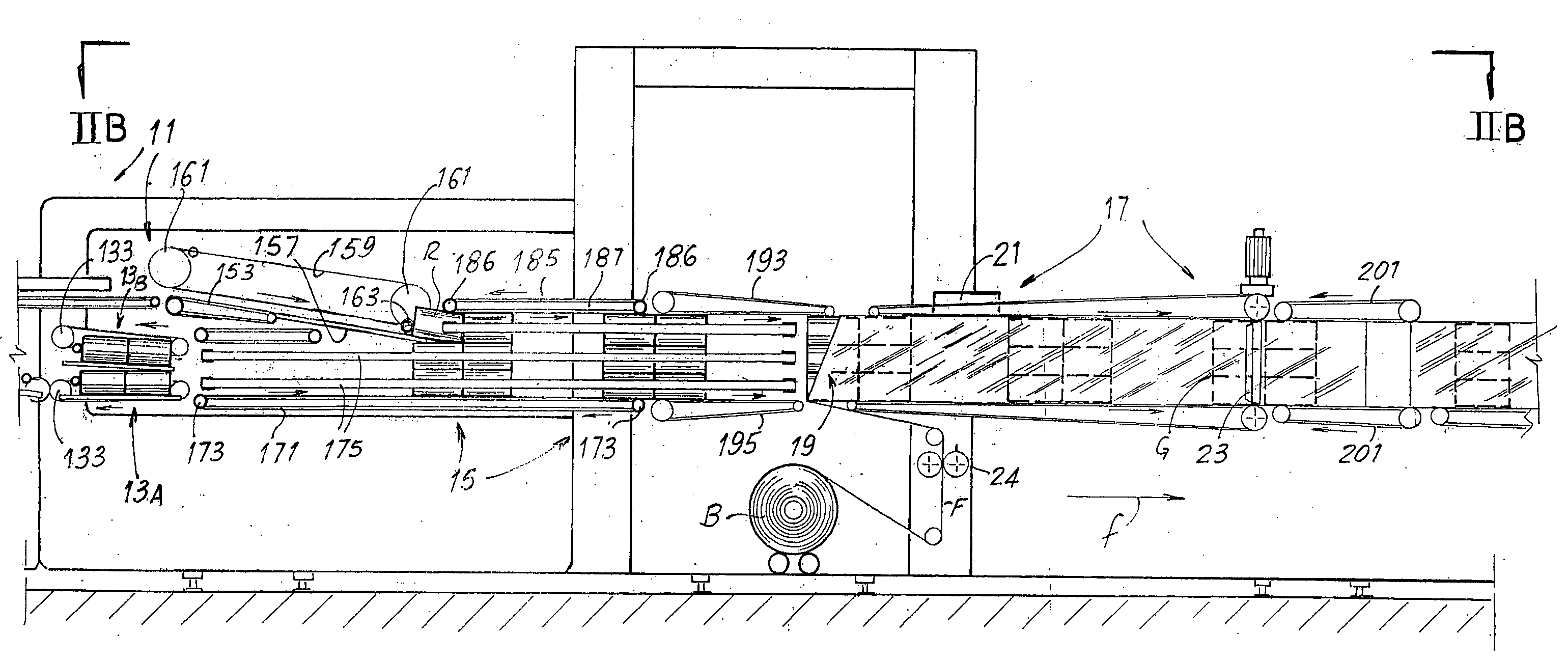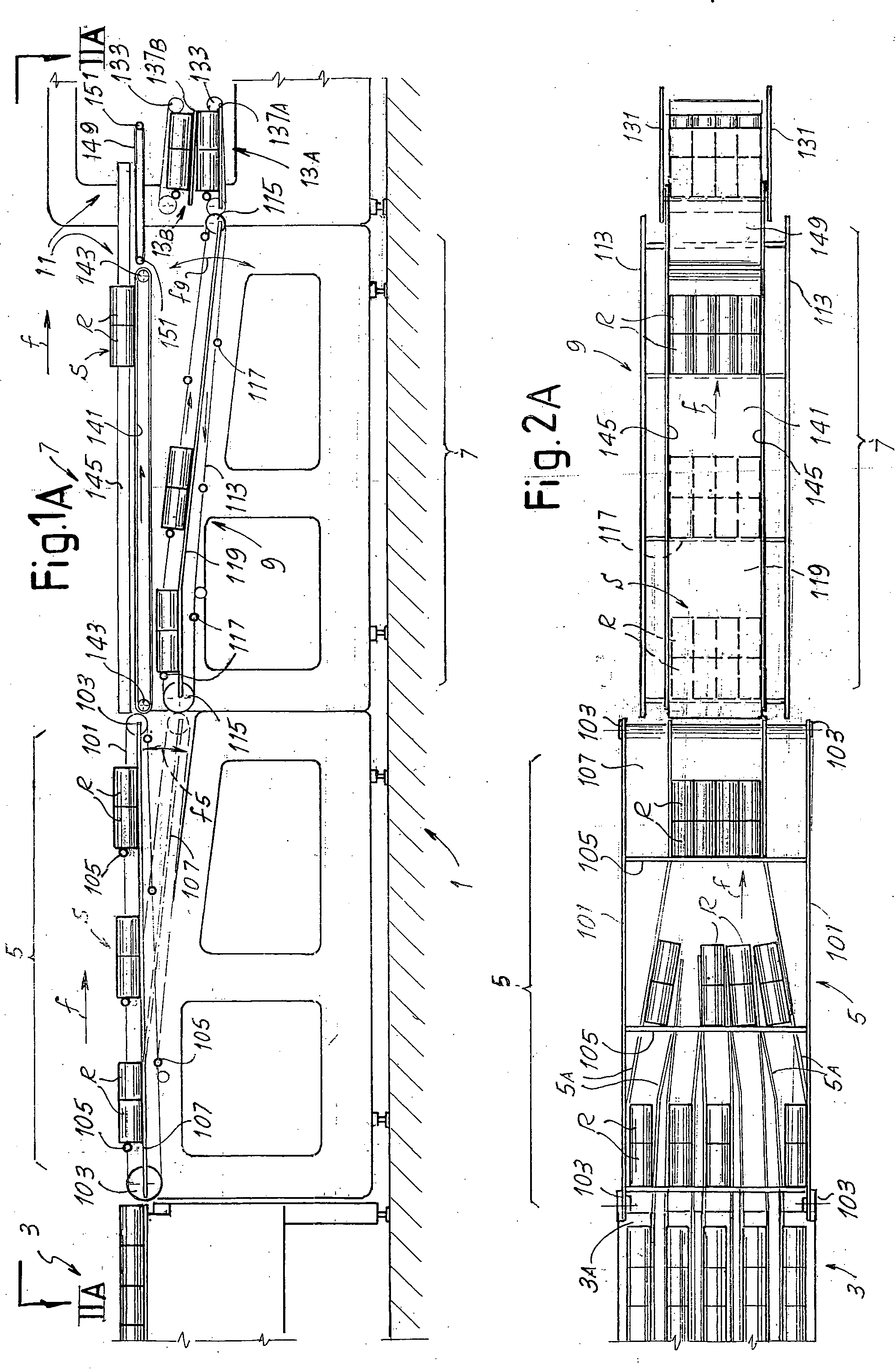Machine and Method for Packaging Groups of Products
a technology of machine and product, applied in the field of packaging products, can solve the problems of limited device efficiency, limited production rate, and low efficiency of plant layout, and achieve the effect of reducing high cost and increasing the control flexibility of orienting conveyors
- Summary
- Abstract
- Description
- Claims
- Application Information
AI Technical Summary
Benefits of technology
Problems solved by technology
Method used
Image
Examples
first modified embodiment
[0096]It must be understood that the corrector device 27 can also take different configurations with respect to that illustrated. For example, in a first modified embodiment, the upper conveyor belts 231 could be removed.
second modified embodiment (see fig.4)
[0097]In a second modified embodiment (see FIG. 4) the corrector device 27 can comprise a continuous flexible member 251, for example formed by a pair of belts disposed on two parallel vertical planes, which carry one or more pushers in the form of blades 253. The arrangement is such that the blades 253 follow a closed path P1 along which a first section is identified parallel to a sliding surface 255, along which the blades 253 advance in the same direction as the direction f of feed of the products, and a second return section. This arrangement allows any angular errors to be corrected, as the push exerted by the blades 253 on the groups G of products R forces them to take a position with the face thereof in contact with the blades 253 parallel thereto, and the blades will be constrained to lie in a vertical plane orthogonal to the direction f of feed of the groups G of products. Correction of transverse positioning errors can for example take place by supplying a portion of the s...
PUM
| Property | Measurement | Unit |
|---|---|---|
| length | aaaaa | aaaaa |
| speeds | aaaaa | aaaaa |
| lengths | aaaaa | aaaaa |
Abstract
Description
Claims
Application Information
 Login to View More
Login to View More - R&D
- Intellectual Property
- Life Sciences
- Materials
- Tech Scout
- Unparalleled Data Quality
- Higher Quality Content
- 60% Fewer Hallucinations
Browse by: Latest US Patents, China's latest patents, Technical Efficacy Thesaurus, Application Domain, Technology Topic, Popular Technical Reports.
© 2025 PatSnap. All rights reserved.Legal|Privacy policy|Modern Slavery Act Transparency Statement|Sitemap|About US| Contact US: help@patsnap.com



